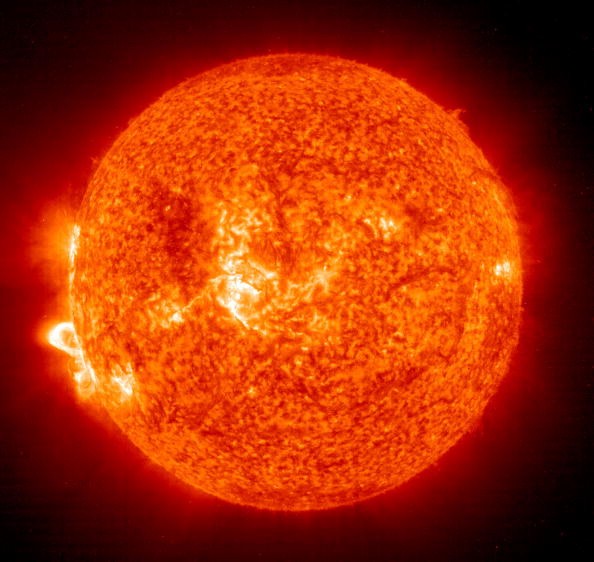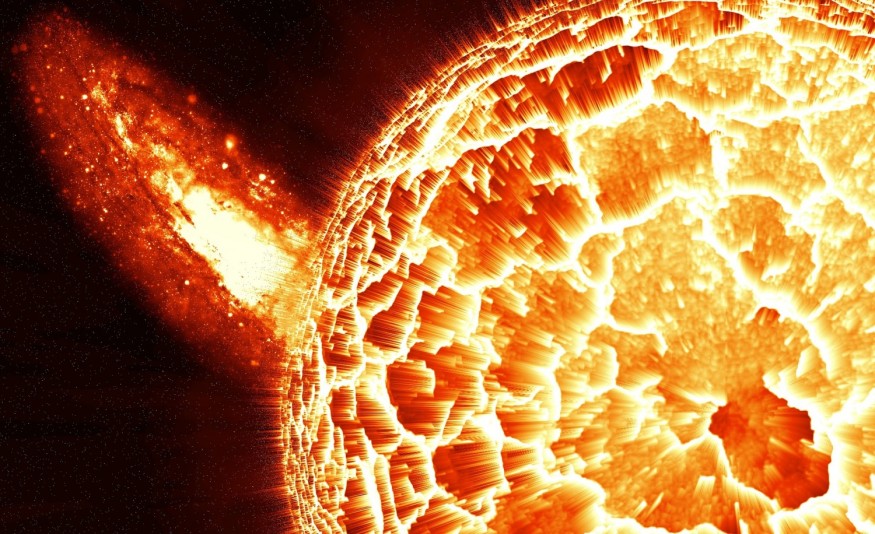On June 1, one of the current solar cycle's "brightest and fastest" coronal mass ejections (CMEs) will sweep by Earth. Even though it is not projected to hit the Earth directly, space weather specialists predict a glancing blow. CMEs are massive explosions of plasma and magnetic lines that erupt from the Sun's outer atmosphere, the corona.

A massive CME may include billions of tons of the material moving at millions of miles per hour, according to NASA, the US space agency. CMEs can occur after the appearance of a solar flare, although the two are unrelated.
On May 28, satellites captured images of a recent CME ejected from the Sun on Friday, May 28.
According to the website SpaceWeather.com, the CME may have approached Earth's magnetic sphere close enough to cause a solar storm.
"Minor G1-class geomagnetic storms are conceivable on June 1 when a CME is projected to sideswipe Earth's magnetic field," according to the website.
Sunspot AR2824

The CME, which was "hurled into space" by the sunspot AR2824, was captured on camera by the Solar and Heliospheric Observatory satellite. CMEs can emerge from sunspots, which are black patches on the Sun's surface where the magnetic field causes temperatures to plummet.
"This is one of the brightest and quickest CMEs of new Solar Cycle 25," SpaceWeather stated.
"If it were coming straight for Earth, the forecast may be different, calling for massive geomagnetic storms instead of moderate ones."
Fortunately for us, the sunspot was not directly facing our planet. As a result, forecasters only anticipate the plasma cloud's tail end to hit the magnetosphere.
Related Article : Expert Warns 'Situation Worse than Covid' if Government Ignores Solar Flare Defense
A Possible G1 Solar Storm

However, the impact might be sufficient to cause a modest G1 geomagnetic or solar storm.
Solar storms are graded on a range of G1 (moderate) to G5 (extreme). The most powerful storms can inflict widespread blackouts, fry satellites, and even disrupt electrical infrastructures. Storms of the G1 category are rarely perceptible, although they can still produce power grid disturbances.
"Minor effect" on satellite operations is possible, according to the US Space Weather Prediction Center (SWPC).
It is also known that some migratory species at high latitudes are impacted.
CME

A coronal mass ejection (CME) is a large burst of plasma from the solar corona accompanied by a magnetic field. They are frequently seen after solar flares and are usually seen during a solar prominence eruption. The plasma is ejected into the solar wind and seen in coronagraph images.
CMEs are frequently linked to other types of solar activity, but there is no widely accepted theoretical understanding of these connections. CMEs are most commonly produced by active areas on the Sun's surface, such as clusters of sunspots with frequent flares. The Sun creates roughly three CMEs every day around solar maximum and approximately one CME every five days around solar minima.
ICME
When the ejection is directed towards Earth and arrives as an interplanetary CME (ICME), the shock wave of moving material generates a geomagnetic storm, squeezing the magnetosphere on the dayside and extending the magnetic tail on the night side. When the magnetosphere reconnects on the nightside, it releases terawatts of energy directed back into Earth's upper atmosphere.
For more Space news, don't forget to follow Nature World News!
© 2025 NatureWorldNews.com All rights reserved. Do not reproduce without permission.





